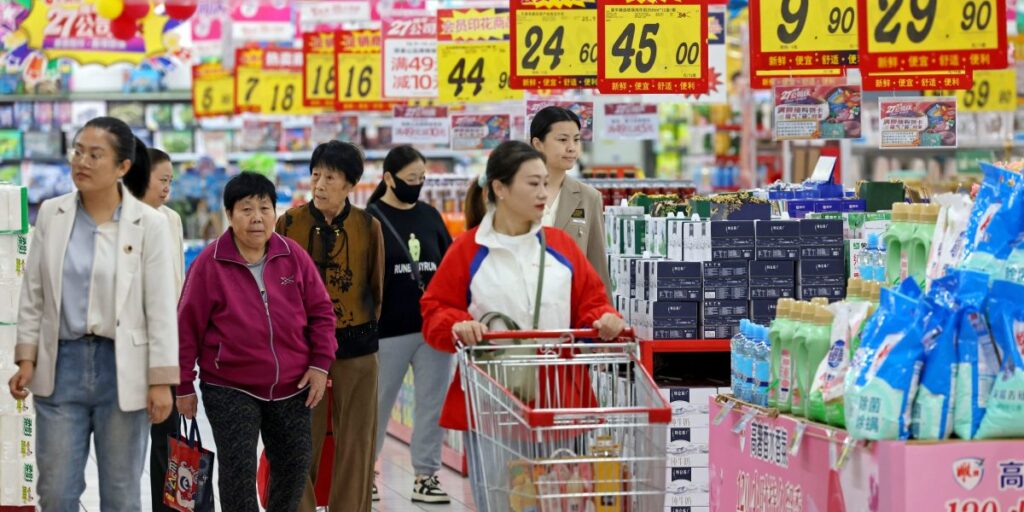China’s deflation problem worsens on weak consumer prices
China is facing the longest period of deflation since the 1990s, with a broad measure of economy-wide prices falling for five straight quarters through June.


China’s deflationary problems became more entrenched in September, with consumer prices still weak and factory gate prices continuing to fall.
The consumer price index inched up 0.4% from last year, although that was boosted above zero only by a jump in fresh vegetable prices. Core CPI rose 0.1% in September, the lowest since February 2021, while producer inflation fell for a 24th straight month, according to data from the National Bureau of Statistics on Sunday. Producer inflation fell 2.8%, year-over-year, slightly more than the 2.6% drop economists had predicted.
Overall food inflation climbed 3.3% in September from a year ago, while the cost of fresh vegetables surged 22.9% after gaining 21.8% in August, boosting inflation by 0.48 percentage point. Adverse weather and seasonal demand ahead of a weeklong holiday in China likely pushed up prices for fruits and vegetables.
The figures highlight the weakness of domestic demand before policymakers unleashed a swath of stimulus measures late September to revive the economy. China is facing the longest period of deflation since the 1990s, with a broad measure of economy-wide prices falling for five straight quarters through June — a stretch that likely continued through September.
Beijing has cut interest rates and ramped up support for property and stock markets since late September. On Saturday, the Finance Ministry promised more aid for the slumping property sector and indebted local governments.
“The overall inflation is still significantly lower than the policy target and demand is still weak,” said Bruce Pang, chief economist for Greater China at Jones Lang LaSalle Inc. “With the effective implementation of existing policies and the launch of new measures, it is expected that consumer and producer confidence and expectations will be effectively boosted with market demand gradually recovering.”
Weak consumption and a rapid rise in output have led to intense price wars in sectors including electric vehicles and solar. Prices of so-called transportation facilities including cars dropped 5.3%, while automobile manufacturers saw their sale prices decline 2.3%.
Falling prices are a bad sign for the economy. Deflation could lead to a vicious circle by driving down spending and investment, which in turn lead to weaker economic growth and higher unemployment.





